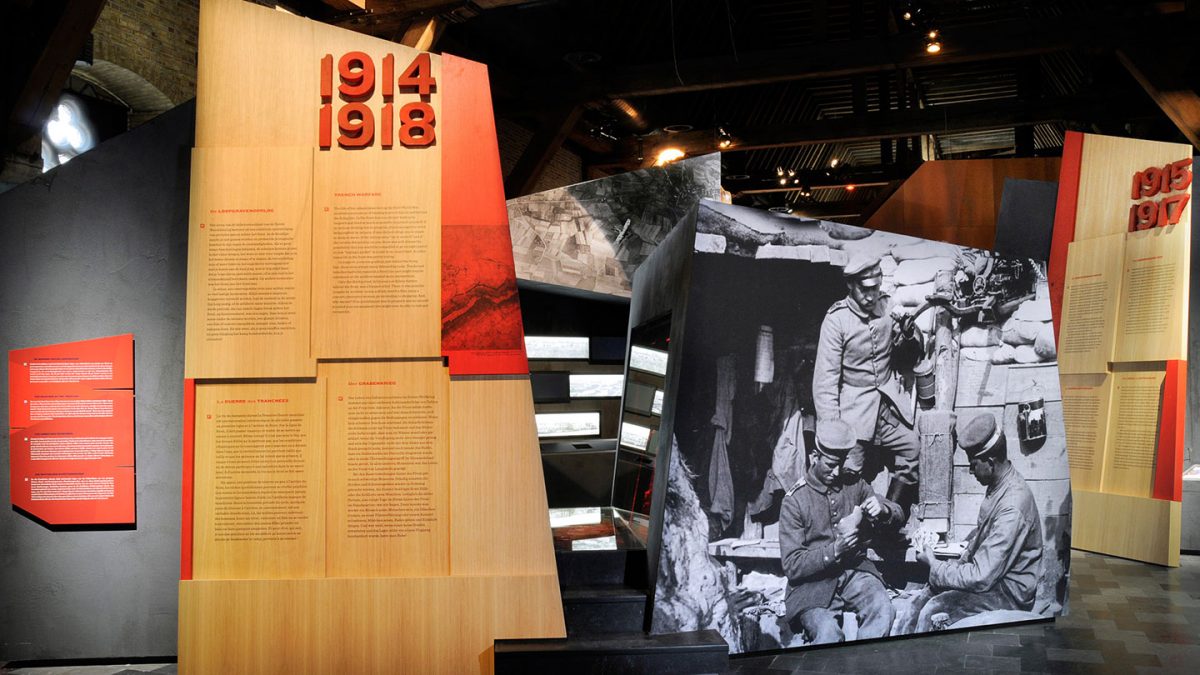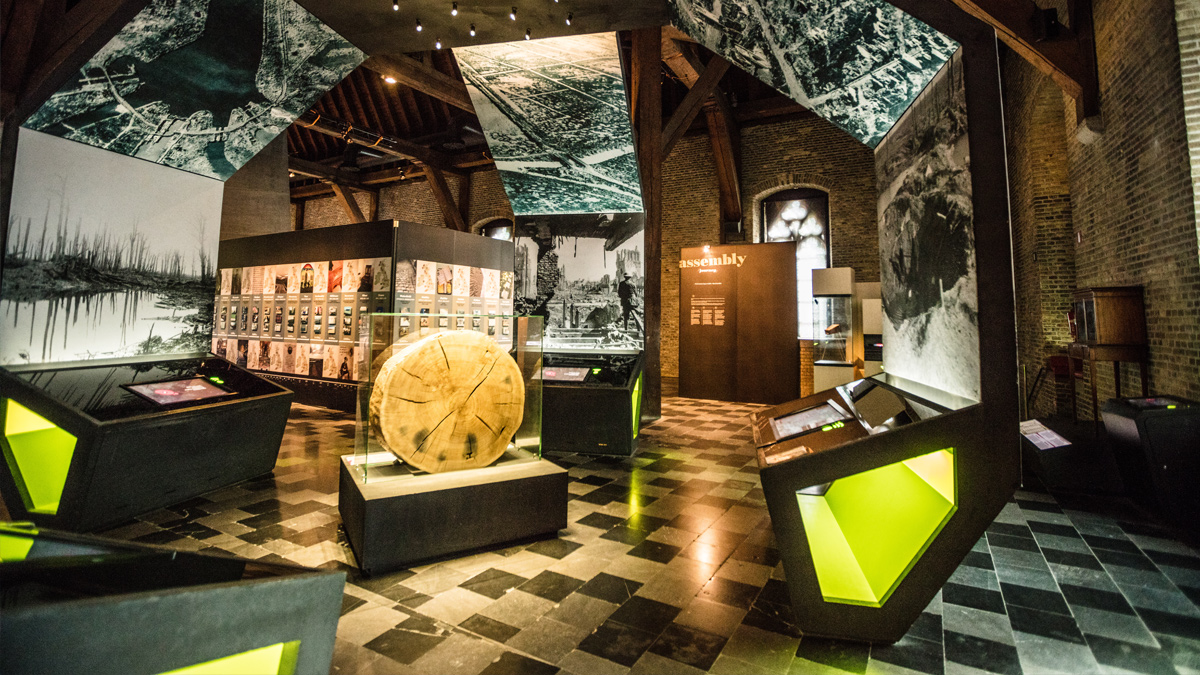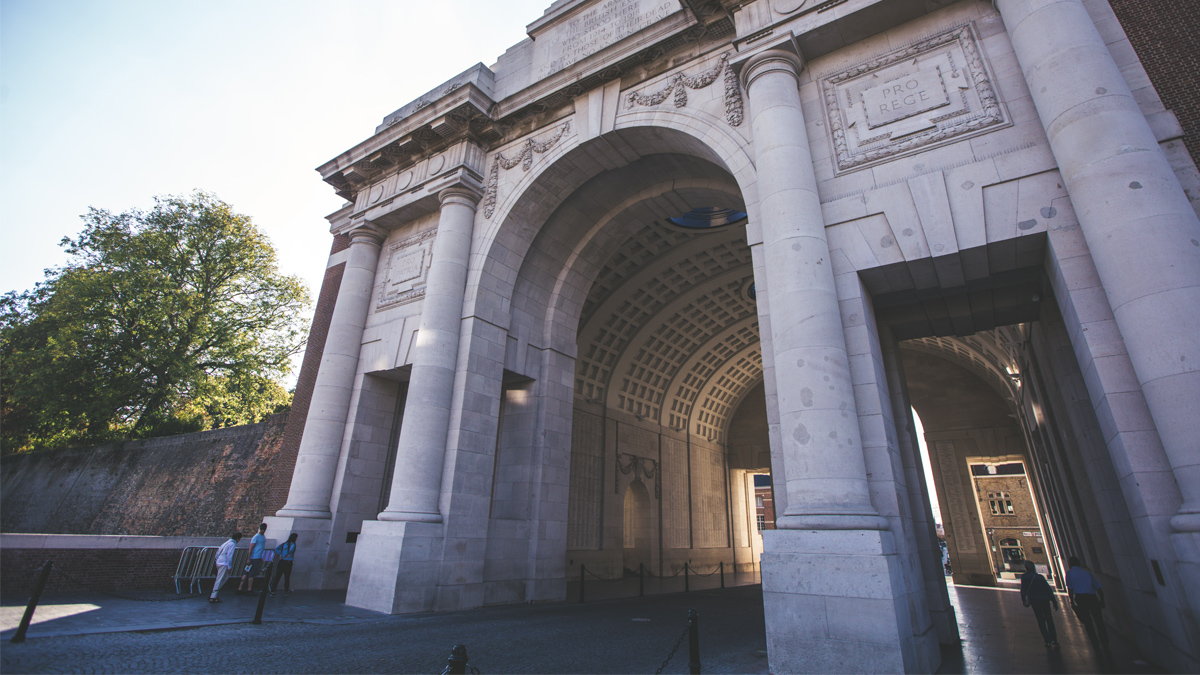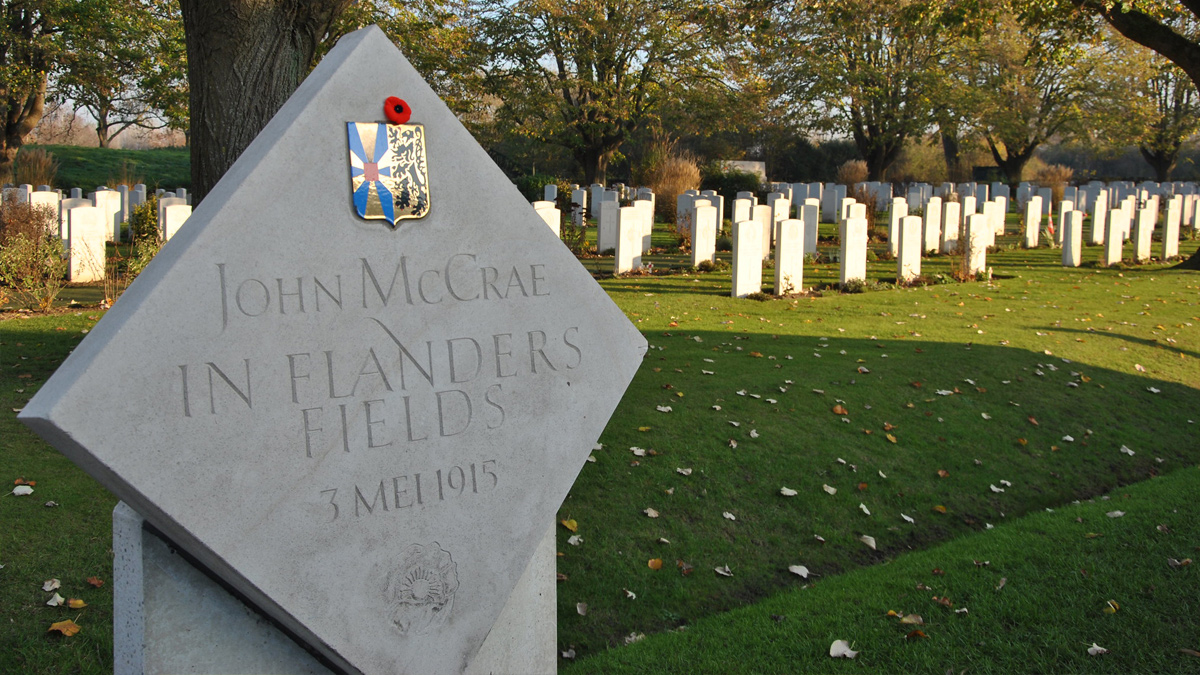
Credit VISITFLANDERS.COM
Bring WW1 History to Life
The Western Front was a stretch of land over 400 miles long that left a scar across France and Belgium from the Swiss border to the North Sea, was the decisive battle theatre of the First World War. As a result, much of the world remembers WW1 from the viewpoint of the Western Front despite it being a global conflict.
Our trip to the western front gives your group a deep insight into the places, people, and sacrifices made by servicemen and women between 1914 – 1918.
Take a look at some of the excursions available on the Western Front, from museums to memorials and the profound impact on life with the stunning fields of military graves.
WW1 Museum In Flanders Fields Museum

Credit VISITFLANDERS.COM
Flanders Fields was a pivotal battle theatre on the Western Front during the First World War. A worldwide symbol of the absurdity of war, which saw a million soldiers from over 50 countries wounded, killed, or go missing.
One of its veterans, John McCrae, who created the poem ‘In Flanders Field’, a Canadian soldier whose work inspired the use and symbolism of the poppy for remembrance as it covered the battlefields of Flanders Fields.
In Flanders Fields Museum is located in the rebuilt Cloth Hall in Ypres on the doorstep of where 600,000 died during the war in Belgium. It exists to preserve the link to the bloody past, with permanent exhibitions highlighting the history and showcasing the things, the people, and stories.
Chronicling the events of WW1, the museum brings eyewitness accounts from those who witnessed the horrors of war to life with real-life actors. A cinema room that gives insight to three British aid workers and their impossible task of caring for the waves of wounded soldiers and civilians.
Menin Gate

Credit VISITFLANDERS.COM
Once a simple gateway over the moat and old town fortifications towards the nearby town of Menin, it soon became a significant focal point for many troops as they made their journey to one of the fronts called the Ypres Salient, which for many never returned.
Adorned with the names of 55,000 fallen British and Commonwealth soldiers lost to war with no fixed graves, the Menin Gate has become one of the most remarkable and poignant memorials of WW1.
WW1 Last Post Ceremony
A tradition since July 1928, the Last Post can be heard at Menin Gate every evening at 8 pm. Come rain or shine, with crowds great or small, the Last Post Association has remembered the fallen with the iconic Last Post bugle call. An enduring and emotional tradition you won’t want to miss.
Essex Farm Cemetery
Essex Farm Cemetery is the final resting place for 1,200 servicemen and was used as a dressing station cemetery from April 1915 to August 1917. 103 of the burials in Essex Farm are unidentified; these burials have a special memorial to commemorate 19 casualties believed to be amongst them.
This was where Canadian Lieutenant-Colonel John McCrae wrote the poem ‘In Flanders Field’ in May 1915.

Credit VISITFLANDERS.COM
Why Study WW1 History?
The Western Front is steeped in history with tales of tragedy, sacrifice, bravery, and unimaginable loss. These memorials, museums, and landscapes serve as a reminder that war never changes. Still, the lessons and remembrance endure and help teach the latest generation some of the worst and best aspects of humankind.
WW1 history has so much more to offer, and these examples are just a snippet of what a unique tailored trip with Rayburn Tours could look like. Visit our dedicated Western Front page for more information, recommended itinerary, and to get in touch.
